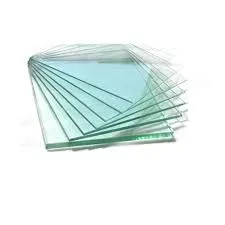Understanding Cutting and Floating Glass A Comprehensive Overview
Cutting float glass is an essential process in the glass manufacturing industry, particularly for applications in architecture, automotive, and interior design. Float glass, a type of flat glass, is produced by floating molten glass on top of molten tin, resulting in a smooth and uniform surface. This process not only enhances the glass's optical clarity but also allows for its versatility in various applications.
Understanding Cutting and Floating Glass A Comprehensive Overview
First, the glass is inspected for imperfections. Any defects such as bubbles, scratches, or discolorations can affect the final product's quality. Once confirmed suitable for cutting, the glass sheets are measured and marked appropriately. Precision is paramount, as slight errors can lead to wastage of material and increased costs.
cutting float glass
The actual cutting is typically performed using specialized tools. Glass cutters equipped with diamond or carbide blades score the surface of the glass, creating a controlled fracture line. This step is followed by snapping the glass along the score line, a process that requires experience to minimize the risk of chipping or cracking.
After cutting, the edges of the glass may require further processing, such as polishing or beveling, to ensure safety and enhance aesthetics. Polishing removes sharp edges, reducing the risk of injury, while beveling adds a decorative touch, making the glass suitable for high-end applications.
Quality control is critical throughout the cutting process. Manufacturers often utilize rigorous standards and tests to assess the final product's durability and clarity, ensuring that it meets industry regulations. This stage may involve checking for stress points or utilising advanced imaging technology to detect any microfractures.
In conclusion, the cutting of float glass is a complex yet vital process that transforms raw glass sheets into tailored products for various applications. With advancements in technology and techniques, the glass industry continues to refine cutting methods, improving efficiency and quality. Understanding the intricacies of this process is essential for anyone involved in glass manufacturing or design, as it directly impacts the final product's integrity and aesthetic appeal.
 Afrikaans
Afrikaans  Albanian
Albanian  Amharic
Amharic  Arabic
Arabic  Armenian
Armenian  Azerbaijani
Azerbaijani  Basque
Basque  Belarusian
Belarusian  Bengali
Bengali  Bosnian
Bosnian  Bulgarian
Bulgarian  Catalan
Catalan  Cebuano
Cebuano  Corsican
Corsican  Croatian
Croatian  Czech
Czech  Danish
Danish  Dutch
Dutch  English
English  Esperanto
Esperanto  Estonian
Estonian  Finnish
Finnish  French
French  Frisian
Frisian  Galician
Galician  Georgian
Georgian  German
German  Greek
Greek  Gujarati
Gujarati  Haitian Creole
Haitian Creole  hausa
hausa  hawaiian
hawaiian  Hebrew
Hebrew  Hindi
Hindi  Miao
Miao  Hungarian
Hungarian  Icelandic
Icelandic  igbo
igbo  Indonesian
Indonesian  irish
irish  Italian
Italian  Japanese
Japanese  Javanese
Javanese  Kannada
Kannada  kazakh
kazakh  Khmer
Khmer  Rwandese
Rwandese  Korean
Korean  Kurdish
Kurdish  Kyrgyz
Kyrgyz  Lao
Lao  Latin
Latin  Latvian
Latvian  Lithuanian
Lithuanian  Luxembourgish
Luxembourgish  Macedonian
Macedonian  Malgashi
Malgashi  Malay
Malay  Malayalam
Malayalam  Maltese
Maltese  Maori
Maori  Marathi
Marathi  Mongolian
Mongolian  Myanmar
Myanmar  Nepali
Nepali  Norwegian
Norwegian  Norwegian
Norwegian  Occitan
Occitan  Pashto
Pashto  Persian
Persian  Polish
Polish  Portuguese
Portuguese  Punjabi
Punjabi  Romanian
Romanian  Russian
Russian  Samoan
Samoan  Scottish Gaelic
Scottish Gaelic  Serbian
Serbian  Sesotho
Sesotho  Shona
Shona  Sindhi
Sindhi  Sinhala
Sinhala  Slovak
Slovak  Slovenian
Slovenian  Somali
Somali  Spanish
Spanish  Sundanese
Sundanese  Swahili
Swahili  Swedish
Swedish  Tagalog
Tagalog  Tajik
Tajik  Tamil
Tamil  Tatar
Tatar  Telugu
Telugu  Thai
Thai  Turkish
Turkish  Turkmen
Turkmen  Ukrainian
Ukrainian  Urdu
Urdu  Uighur
Uighur  Uzbek
Uzbek  Vietnamese
Vietnamese  Welsh
Welsh  Bantu
Bantu  Yiddish
Yiddish  Yoruba
Yoruba  Zulu
Zulu 

